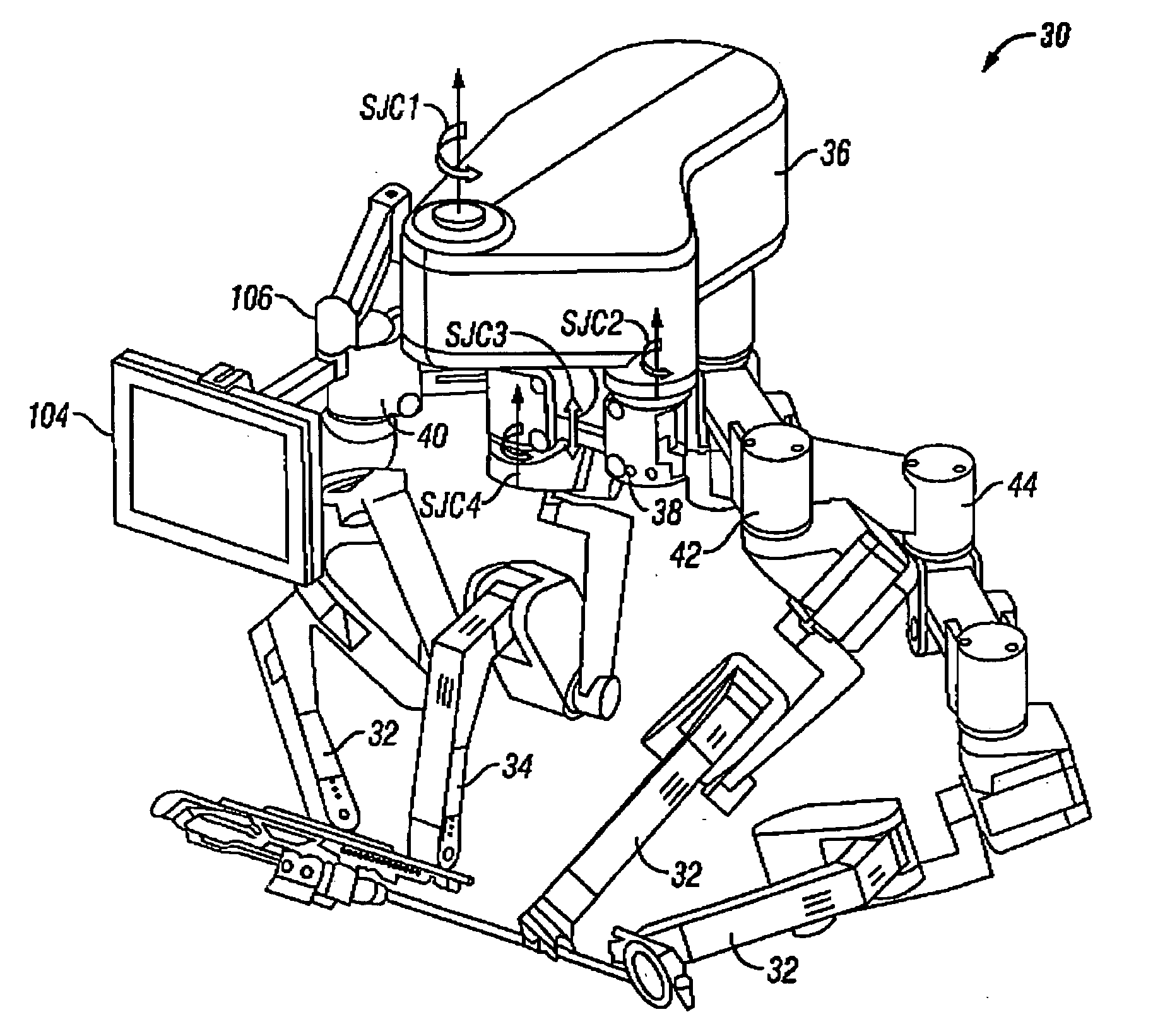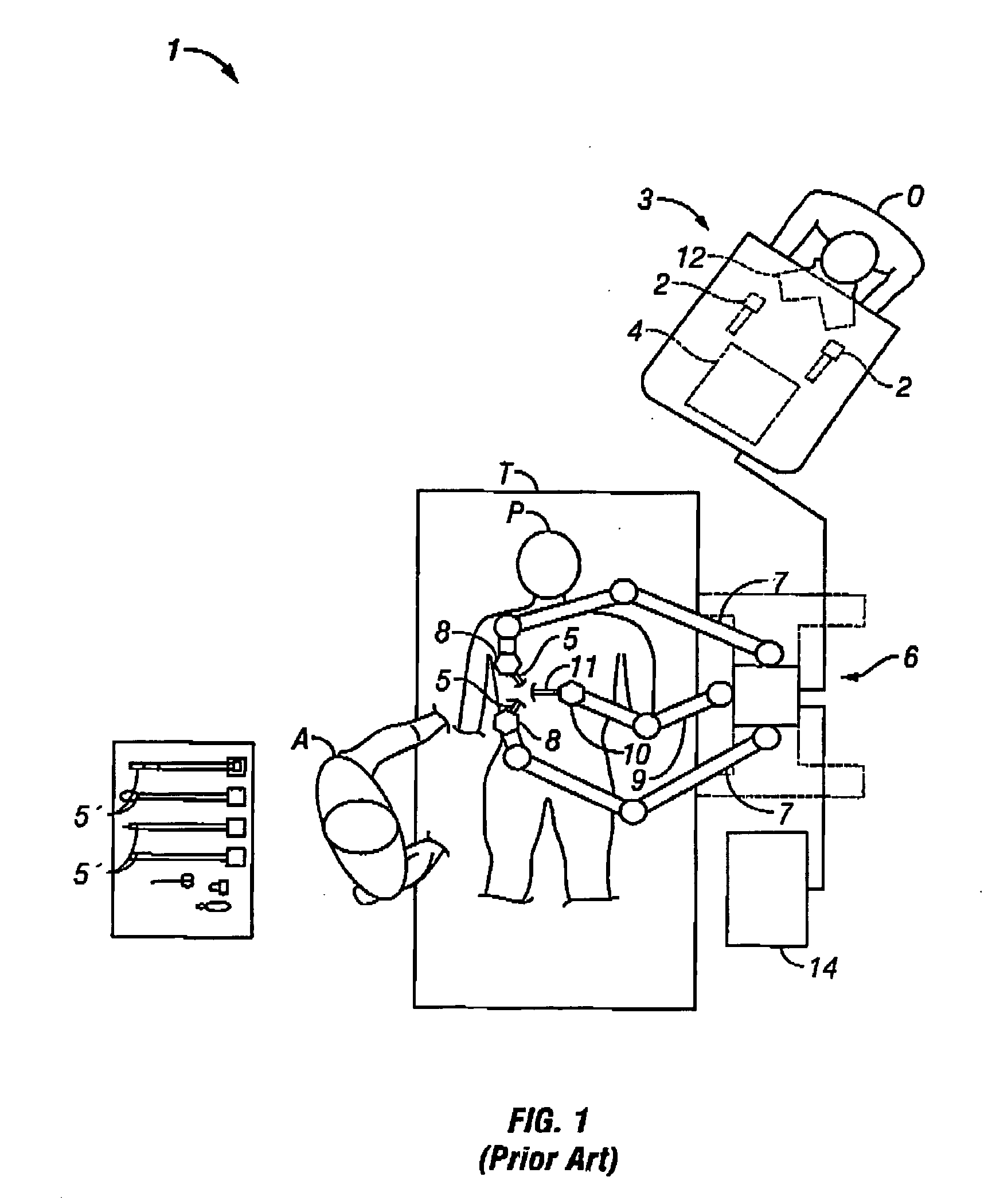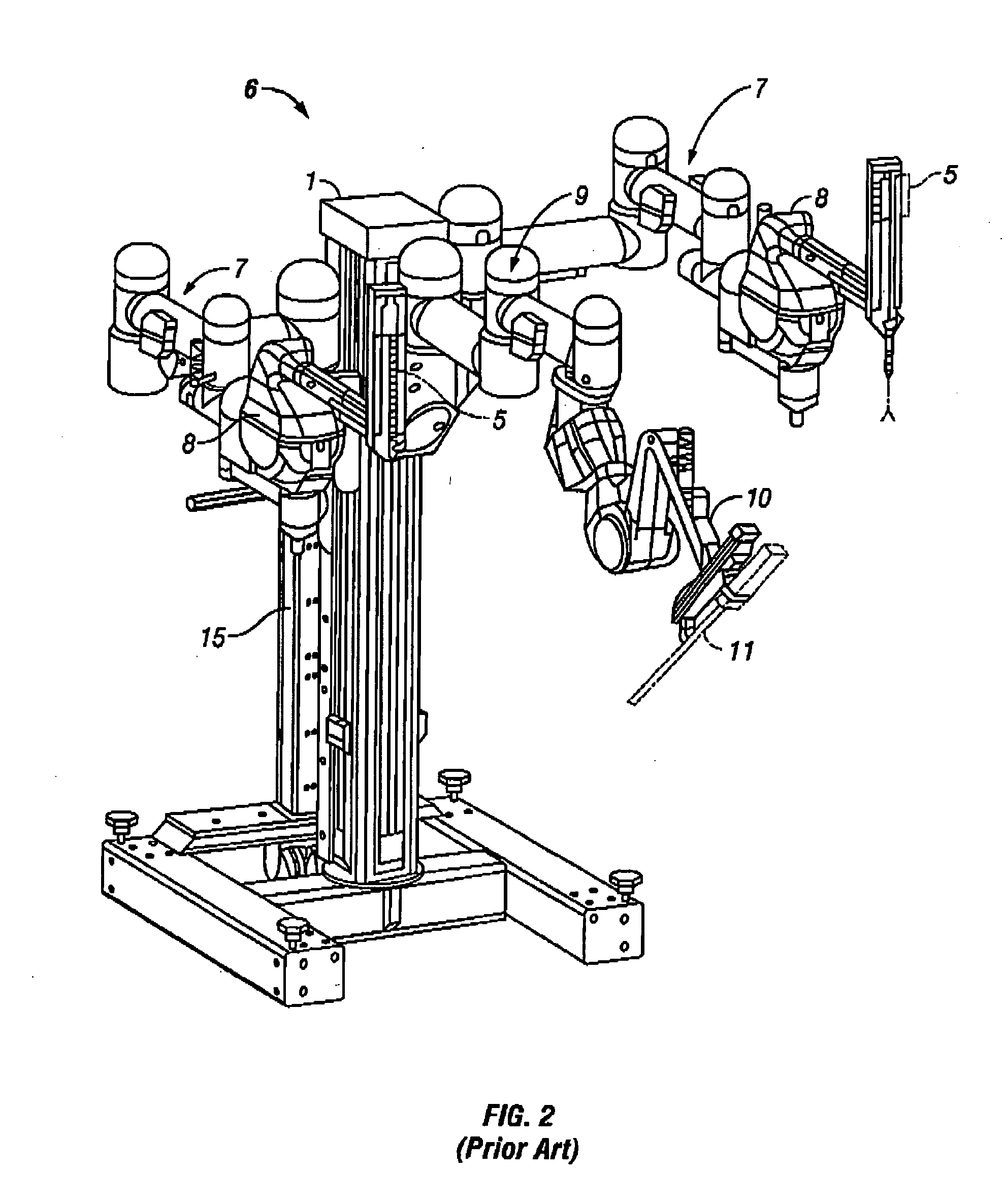Modular manipulator support for robotic surgery
a robotic surgery and module technology, applied in the field of medical, surgical, robotic devices and systems, to achieve the effects of improving space utilization in the operating room, improving maneuverability, and improving structur
- Summary
- Abstract
- Description
- Claims
- Application Information
AI Technical Summary
Benefits of technology
Problems solved by technology
Method used
Image
Examples
Embodiment Construction
[0036]FIGS. 1 through 4 illustrate a robotic surgical system 1 for performing minimally invasive robotic surgery, which is described in more detail in U.S. Pat. No. 6,246,200. An operator O (generally a surgeon) performs a minimally invasive surgical procedure on patient P lying on operating table T, the operator O manipulating one or more input devices or masters 2 at a surgeon's console 3. In response to the surgeon's inputs, a computer processor 4 of console 3 directs movement of endoscopic surgical instruments or tools 5, effecting servo-mechanical movement of the instruments via a robotic patient side system 6 (a cart-mounted system in this example).
[0037] Typically, patient side system or cart 6 includes at least three robotic manipulator arms. Two set-up joint arms or linkages 7 (mounted at the sides of cart 6 in this example) support and position servo-manipulators 8 which drive surgical tools 5; and one set-up joint arm or linkage 9 (mounted at the center of cart 6 in this...
PUM
 Login to View More
Login to View More Abstract
Description
Claims
Application Information
 Login to View More
Login to View More - R&D
- Intellectual Property
- Life Sciences
- Materials
- Tech Scout
- Unparalleled Data Quality
- Higher Quality Content
- 60% Fewer Hallucinations
Browse by: Latest US Patents, China's latest patents, Technical Efficacy Thesaurus, Application Domain, Technology Topic, Popular Technical Reports.
© 2025 PatSnap. All rights reserved.Legal|Privacy policy|Modern Slavery Act Transparency Statement|Sitemap|About US| Contact US: help@patsnap.com



